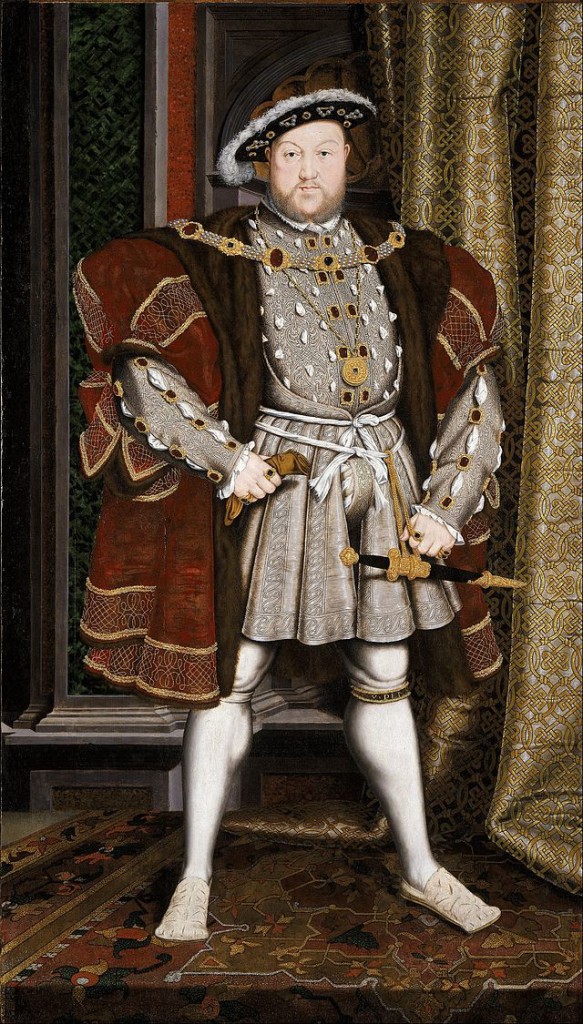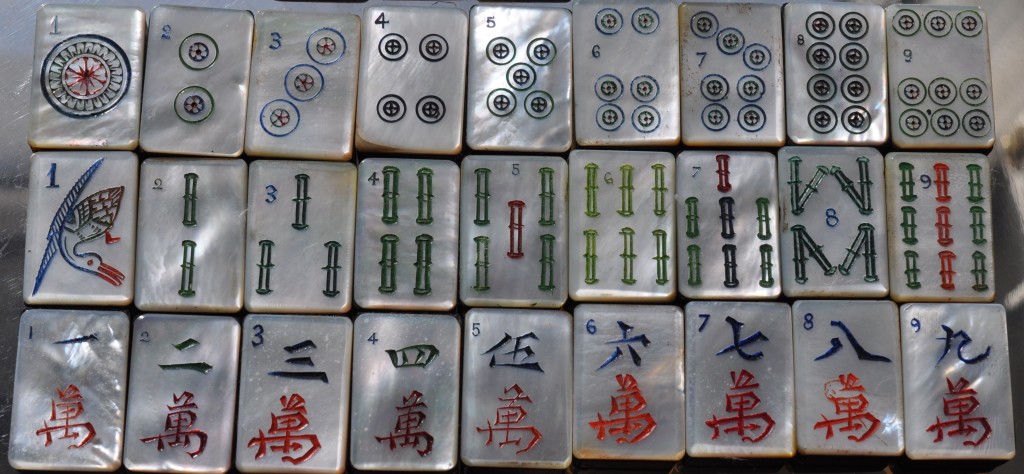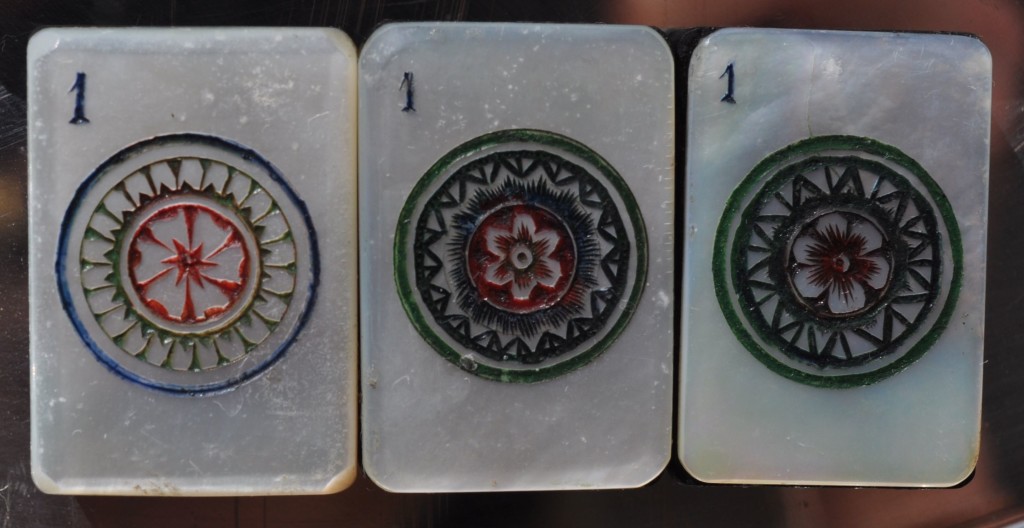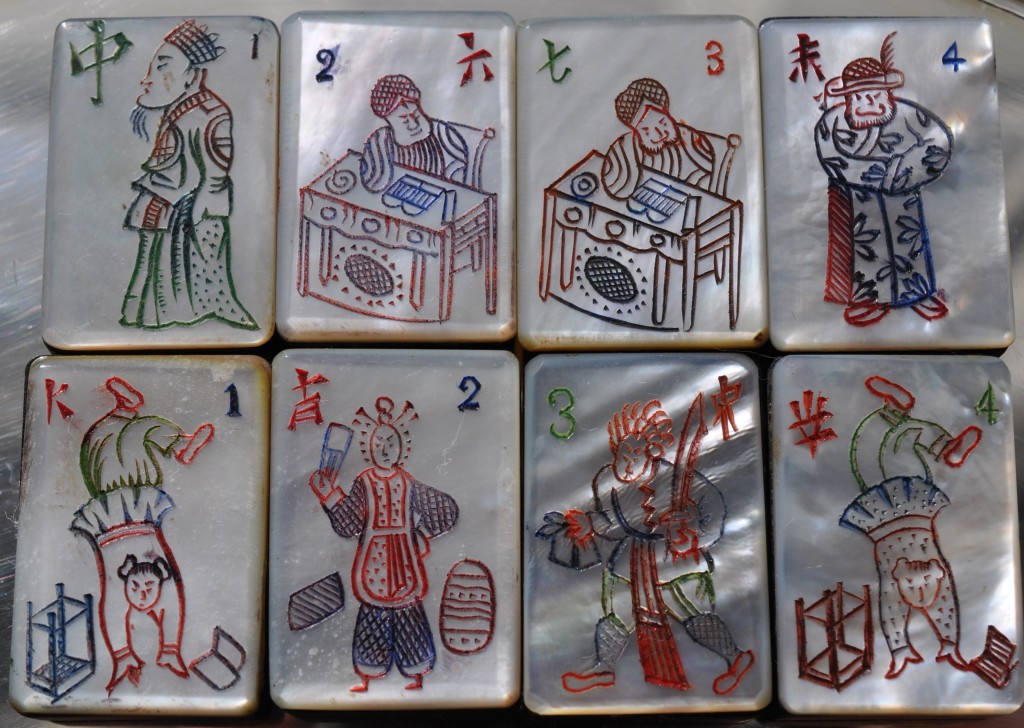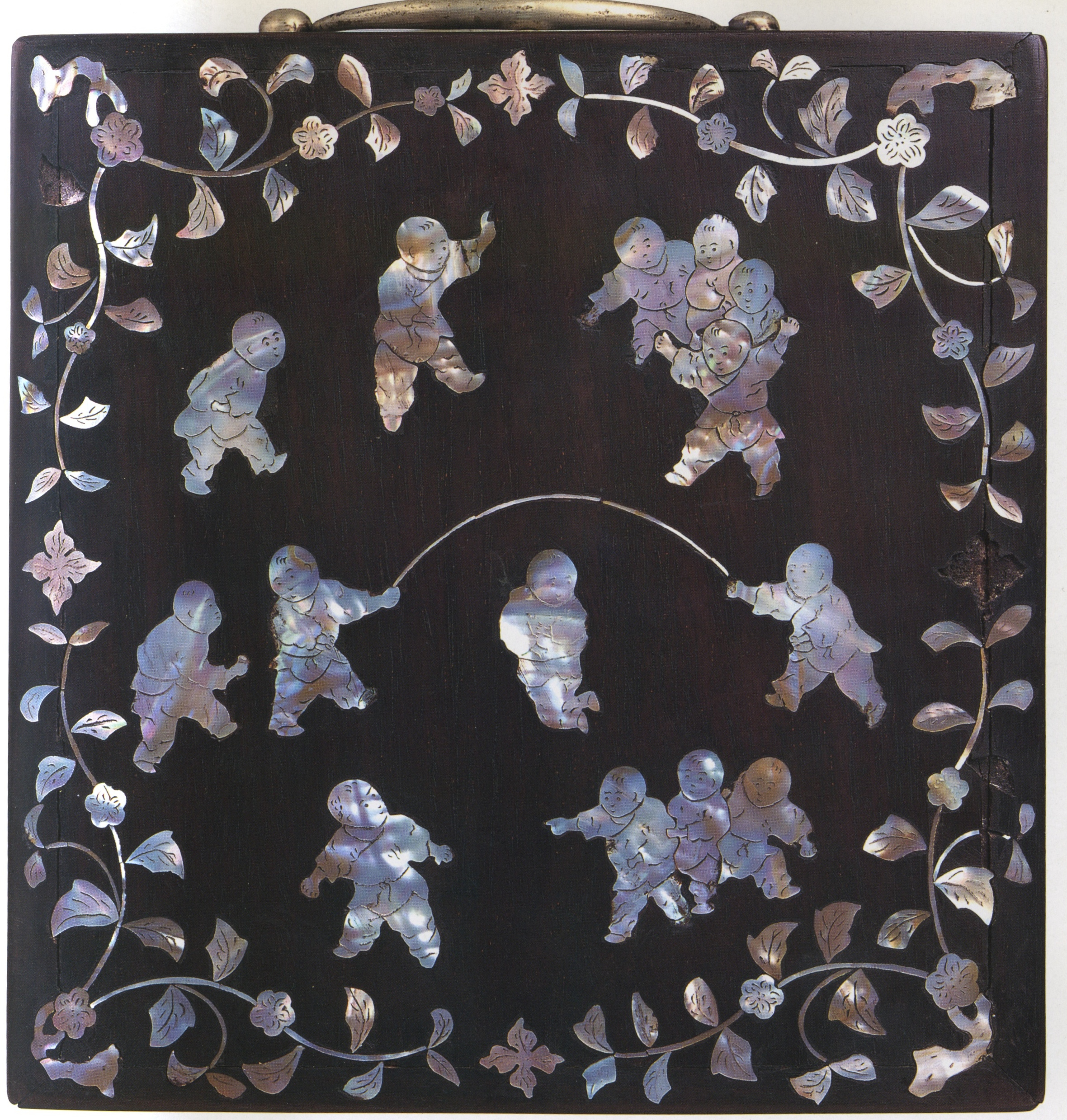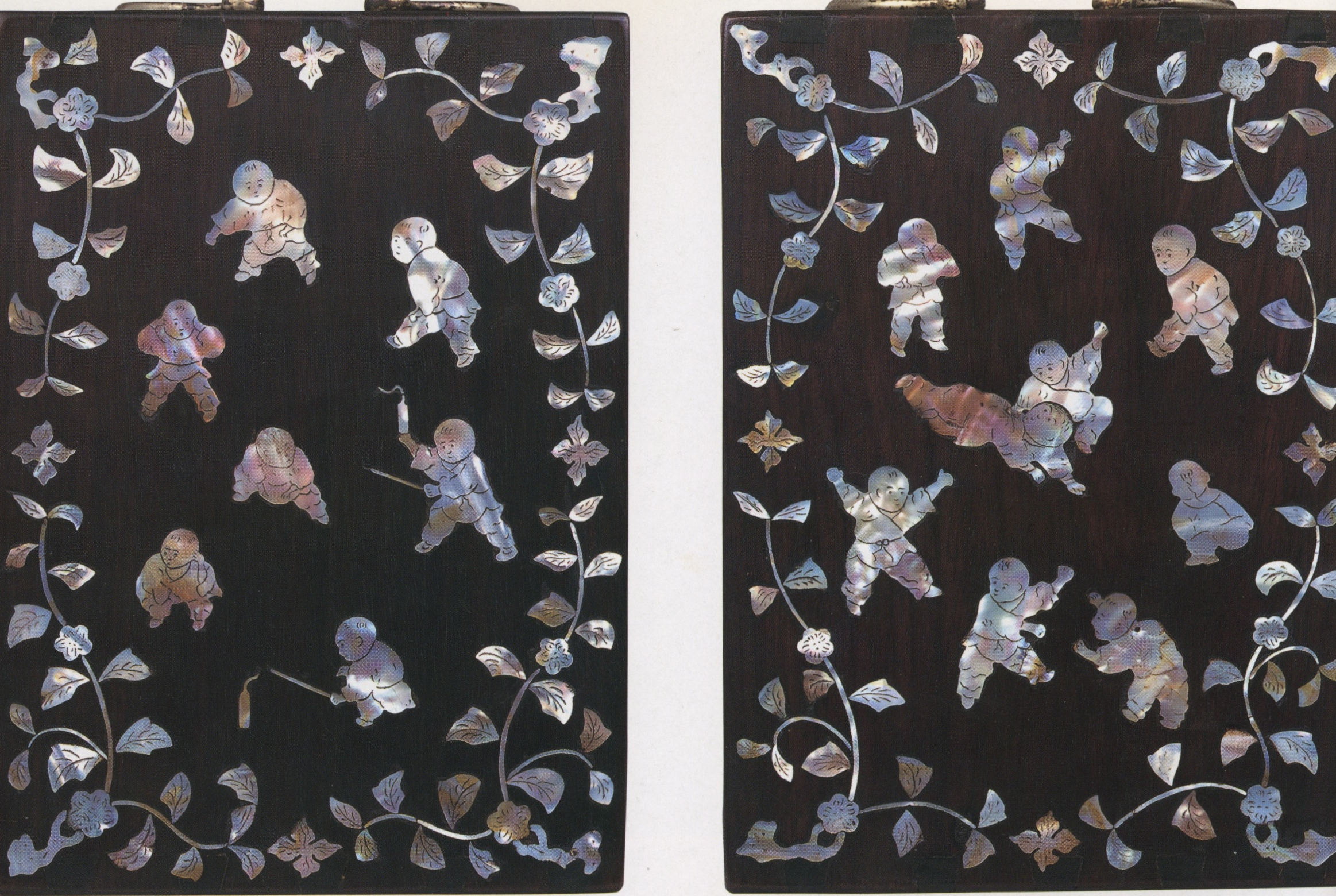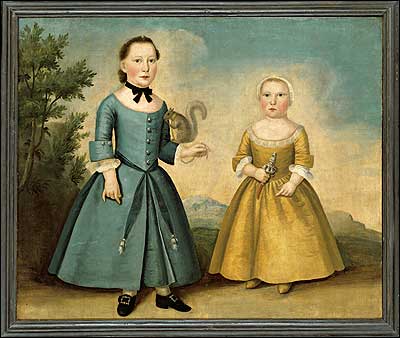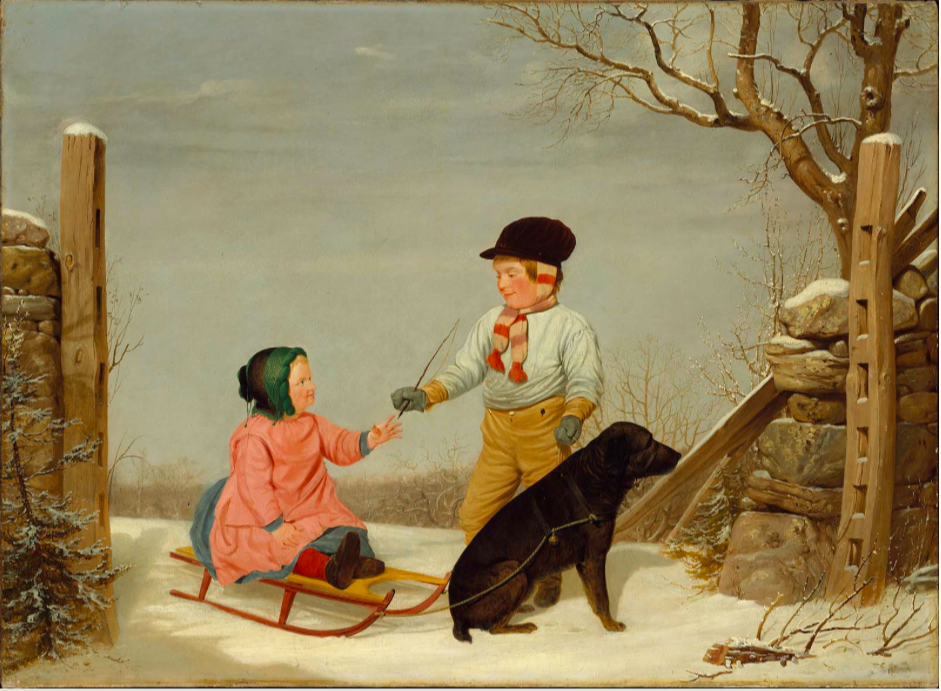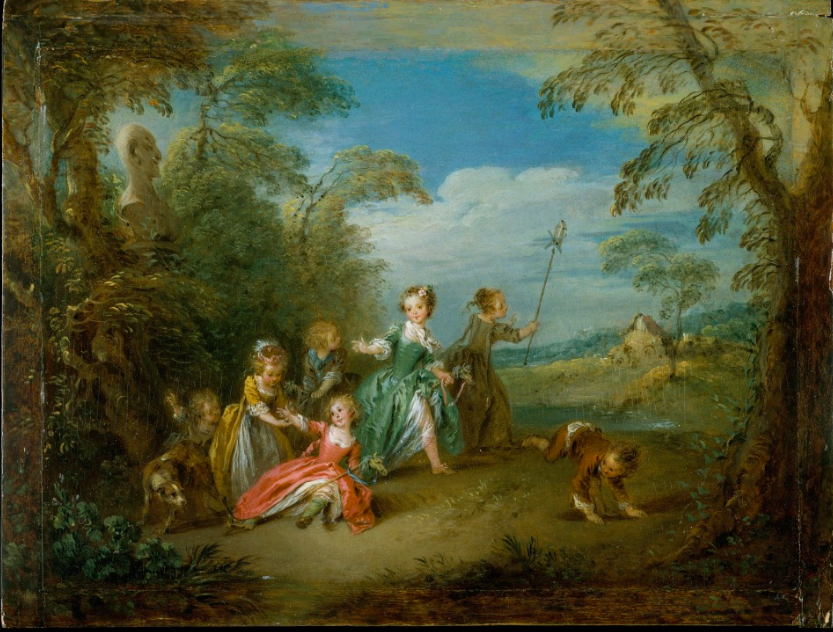This is a copy of a the most famous portrait of King Henry VIIIth by Hans Holbein, painted in 1536 or 1537. The original was lost in a fire in 1698, but is known to us by the many copies made of it while it was extant.
Wolf Hall about Henry VIIIth is airing on PBS, and it has gotten some great reviews. A show with the same name is on Broadway. (Keep reading, you'll see why this is related).
Today we turn to this delightful Mahjong set with a Mother-of-pearl wafer glued to an ebony back. The carving is light, and not quite as detailed as the set that we featured at the beginning of last year. But the carving is wonderful never-the-less. You will note the delicacy of the suits and numbers. The crane, the symbol for longevity, is seen mid-air, with his feet tucked beneath him. The 9 dots has a unique look about it, with three Dots above the 9 and six below.
This close up allows the wafers to show off their lovely natural shimmer.
What is interesting are the One Dots-there are actually three different kinds, almost as if they were just scooped up from buckets at the factory.
And now for the great reveal and the tie-in to Henry VIIIth:
If that man on the upper right does not look like Henry VIIIth, I don't know who does!! He certainly does not look like most people we see on mahjong tiles. And I love that crooked smile! Acrobats are delightful doing their cartwheels– their books are flying to the floor so perhaps they are taking a study break! You'll notice that there are no real suites of Flowers, although the numbers do go from 1 to four on each set, but the colors of the numbers are not related, giving more credence to the idea of scooping up tiles from buckets at the factory.
My best guess is that this set was made in Europe, and probably in Germany. There is a real German look to #4 upper right, especially with that feather in his cap. Some of the people look like caricatures, so I doubt they were carved in China
To read more about Henry VIIIth, click here.
To read about Wolf Hall on TV, click here
And Hilary Mantels' book
For those of you who don't yet know, there is a wonderful magazine, The Mahjong Collector. I just received my issue and I am over the moon!
You can find out more by emailing them at this address:
To see when I am doing author appearances, click here
You can now follow me on Twitter!
@MahJonggGregg
To learn more about Mah Jongg, you might want to take a look at this book that I wrote with Ann Israel, published by Tuttle.
www.mahjonggtheartof thegame.com
To order it click here:
http://www.barnesandnoble.com/w/mah-jongg-ann-israel/1118759459?ean=9784805313237
or here from Amazon
http://www.amazon.com/Mah-Jongg-Collectors-Guide-Tiles/dp/4805313234/ref=sr_1_7?ie=UTF8&qid=1414844427&sr=8-7&keywords=mah+jongg

